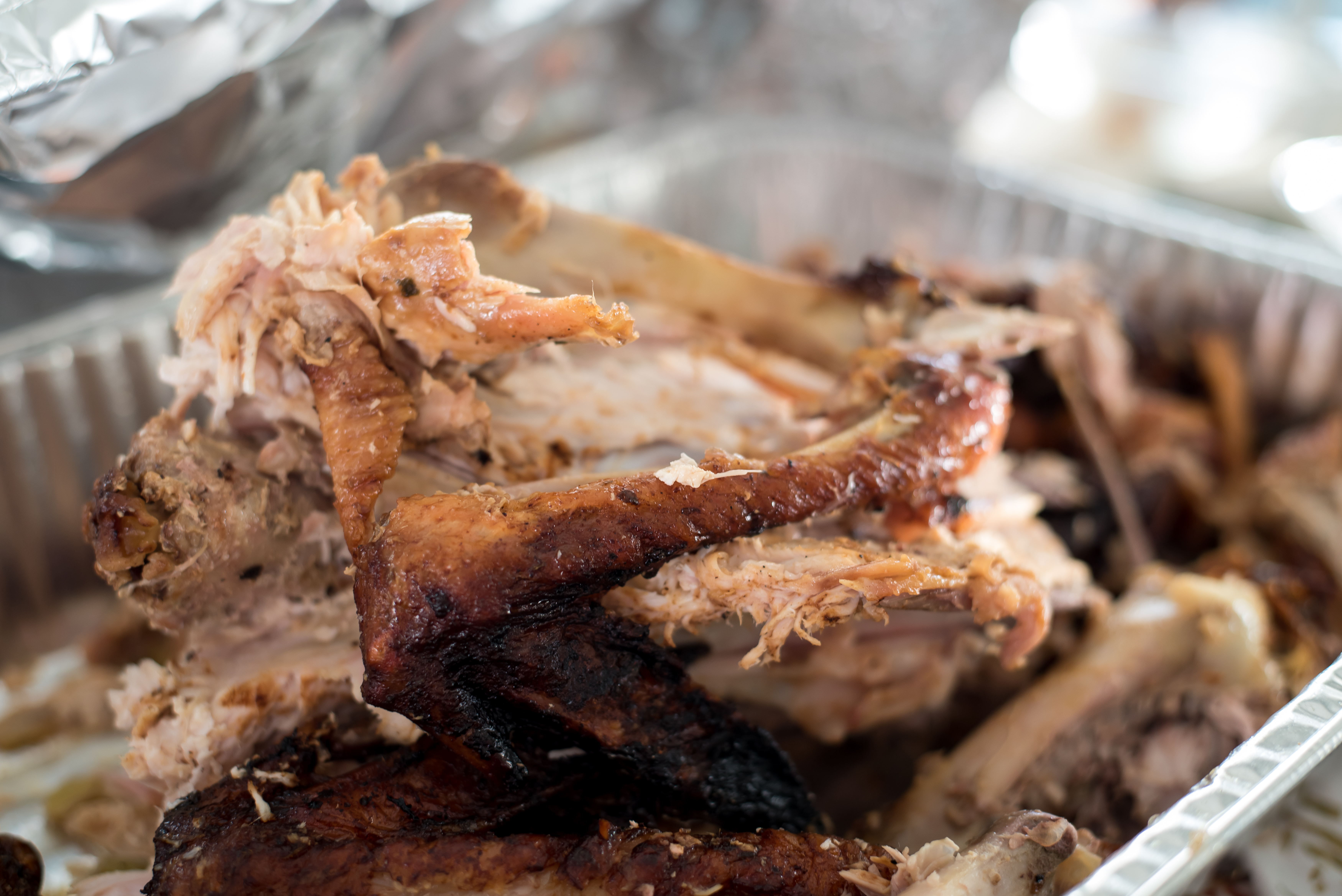
The Poultry Label Says "Fresh"
"I am shopping for a fresh turkey because I do not want the hassle of thawing a frozen one. When should I buy it and how do I know if it is fresh? What does 'fresh' on the label really mean?"
Prior to 1997, poultry could be sold as "fresh" even if it was frozen "as solid as a block of ice". However, consumer concerns about "rock" frozen poultry being sold as "fresh" led USDA to reconsider the term "fresh" as it applies to raw whole poultry and cuts of poultry. Furthermore, national press coverage and testimonies at public hearings indicated strong interest in the term "fresh" being re-defined.
After lengthy hearings, surveys and reviews of science-based information, USDA published a "fresh" labeling rule that went into effect in December 1997. Today the definition of "fresh" is intended to meet the expectations of consumers buying poultry. Below are questions and answers about the "fresh" labeling rule and the terms "fresh" and "frozen."
Why is 26 °F the lowest temperature at which poultry remains fresh?
Below 26 °F, raw poultry products become firm to the touch because much of the free water is changing to ice. At 26 °F, the product surface is still pliable and yields to the thumb when pressed. Most consumers consider a product to be fresh, as opposed to frozen, when it is pliable or when it is not hard to the touch.
What are the labeling requirements for frozen, raw poultry?
Raw poultry held at a temperature of 0 °F or below must be labeled with a "keep frozen" handling statement.
What does the "fresh" rule mean to consumers?
For consumers, "fresh" means whole poultry and cuts have never been below 26 °F. This is consistent with consumer expectations of "fresh" poultry, i.e., not hard to the touch or frozen solid. Fresh poultry should always bear a "keep refrigerated" statement.
Is there an increased microbiological safety risk associated with raw poultry that is maintained at 26 °F?
No. The National Advisory Committee on the Microbiological Criteria for Foods, as well as several scientific organizations, agreed that there is no increased microbiological risk associated with raw product maintained at 40 °F or below.
How should consumers handle fresh or frozen raw poultry products?
Fresh or frozen raw poultry will remain safe with proper handling and storage.
Fresh, raw poultry is kept cold during distribution to retail stores to prevent the growth of harmful bacteria and to increase its shelf life. It should be selected from a refrigerated cooler which maintains a temperature of below 40 °F and above 26 °F. Select fresh poultry just before checking out at the store register. Put packages in disposable plastic bags (if available) to contain any leakage that could cross-contaminate cooked foods or fresh produce.
At home, immediately place fresh raw poultry in a refrigerator that maintains 40 °F or below and use it within 1 to 2 days, or freeze the poultry at 0 °F or below. Frozen poultry will be safe indefinitely. For best quality, use frozen, raw whole poultry within 1 year, poultry parts within 9 months, and giblets within 4 months.
Poultry may be frozen in its original packaging or repackaged. If you are freezing poultry longer than 2 months, you should wrap the porous store plastic packages with airtight heavy-duty foil, freezer plastic wrap or freezer bags, or freezer paper. Use freezer packaging materials or airtight freezer containers to repackage family-sized packages into smaller units.
Proper wrapping prevents "freezer burn" (drying of the surface that appears as grayish brown leathery spots on the surface of the poultry). It is caused by air reaching the surface of the food. You may cut freezer-burned portions away either before or after cooking the poultry. Heavily freezer-burned products may have to be discarded because they might be too dry or tasteless.
What is the difference in quality between fresh and frozen poultry?
Both fresh and frozen poultry are inspected by USDA's Food Safety and Inspection Service. The quality is the same. It is personal preference that determines whether you purchase fresh or frozen poultry.
What does the date on the package mean?
"Open Dating" (use of a calendar date as opposed to a code) on a food product is a date stamped on the package of a product to help the store management determine how long to display the product for sale. It is a quality date, not a safety date. "Open Dating" is found primarily on perishable foods such as meat, poultry, eggs, and dairy products. If a calendar date is used, it must express both the month and day of the month (and the year, in the case of shelf-stable and frozen products). If a calendar date is shown, immediately adjacent to the date must be a phrase explaining the meaning of that date such as "sell by" or "use before." A "sell-by" date tells the store how long to display the product for sale. You should buy the product before the date expires. A "use-by" date is the last date recommended for the use of the product while at peak quality. In both cases, the date has been determined by the food processor.
There is no uniform or universally accepted system used for "Open Dating" of food in the United States. Although dating of some foods is required by more than 20 states, there are areas of the country where much of the food supply has almost no dating.
What should you do if you find poultry that is frozen, but labeled "fresh"?
You can call the USDA Meat and Poultry Hotline and file a complaint.



